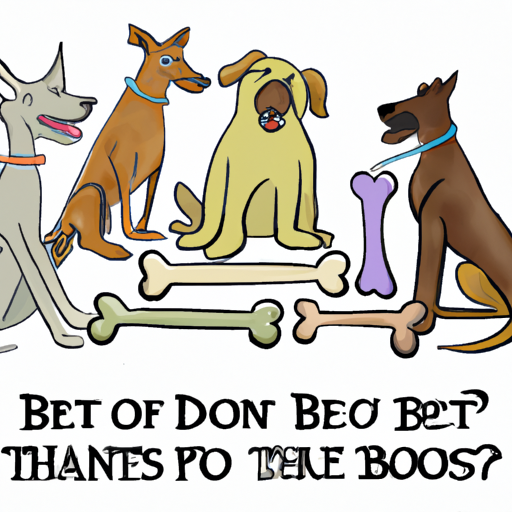Introduction
As a caregiver, it’s only natural that you want the best for your furry friend. You’ve likely heard that bones are a great treat for dogs, providing them not only with something fun to chew on but also benefiting their oral health. But with so many bone options available, how do you know which ones are the best and safest for your beloved pet?
The Benefits of Bones
Firstly, let’s explore why bones are beneficial for your dog. There are several reasons:
- Chewing on bones can help keep your dog’s teeth clean and healthy.
- They can help prevent gum disease.
- Bones provide your dog with essential nutrients, such as calcium and phosphorous.
- Chewing on bones can also keep your dog entertained, reducing the chances of them chewing on something they shouldn’t.
However, it’s worth noting that not all bones are created equal. The type, size, and preparation of the bone can all impact how safe and beneficial it is for your dog.
Types of Bones
There are two main types of bones you can give your dog: raw bones and cooked bones.
-
Raw Bones: These are typically the safest option for your dog. They’re softer, less likely to splinter, and are full of natural nutrients. However, they can be a bit messy and may carry bacteria if not handled properly.
-
Cooked Bones: Cooked bones, especially those that have been boiled or roasted, can become brittle and are more likely to splinter. This can pose a choking hazard or cause internal damage if swallowed. As such, they’re generally not recommended.
| Type of Bone | Pros | Cons |
|---|---|---|
| Raw | Safer, more nutrients | Can be messy, potential for bacteria |
| Cooked | Tastier | Can splinter, less nutritious |
Choosing the Right Bone
When choosing a bone for your dog, consider their size and chewing habits. Larger dogs will need larger bones, while smaller dogs will do well with smaller bones.
It’s also important to monitor your dog while they’re chewing on a bone. If they’re a particularly aggressive chewer, they might be more likely to break off large pieces of the bone, which could cause choking or digestive issues.
Alternatives to Bones
If you’re uncomfortable with the idea of giving your dog a bone, there are plenty of alternatives available.
- Dental chews are designed to clean your dog’s teeth and are often infused with ingredients that promote oral health.
- Antler chews are another option. They’re durable and long-lasting, and they’re also packed with beneficial nutrients.
FAQ
Q: Can I give my dog a bone from my dinner?
A: It’s generally best to avoid giving your dog bones from your plate as they’re likely to be cooked and could splinter.
Q: How often can I give my dog a bone?
A: This can vary depending on the type of bone and your dog’s size, but generally, it’s safe to give your dog a bone once or twice a week.
Q: Can bones replace regular dental care for my dog?
A: While bones can help keep your dog’s teeth clean, they should not replace regular dental care, including brushing and professional cleanings.
Remember, every dog is unique. What works well for one dog might not work as well for another. Therefore, it’s always best to consult with your vet before introducing a new type of bone or chew into your dog’s diet.



